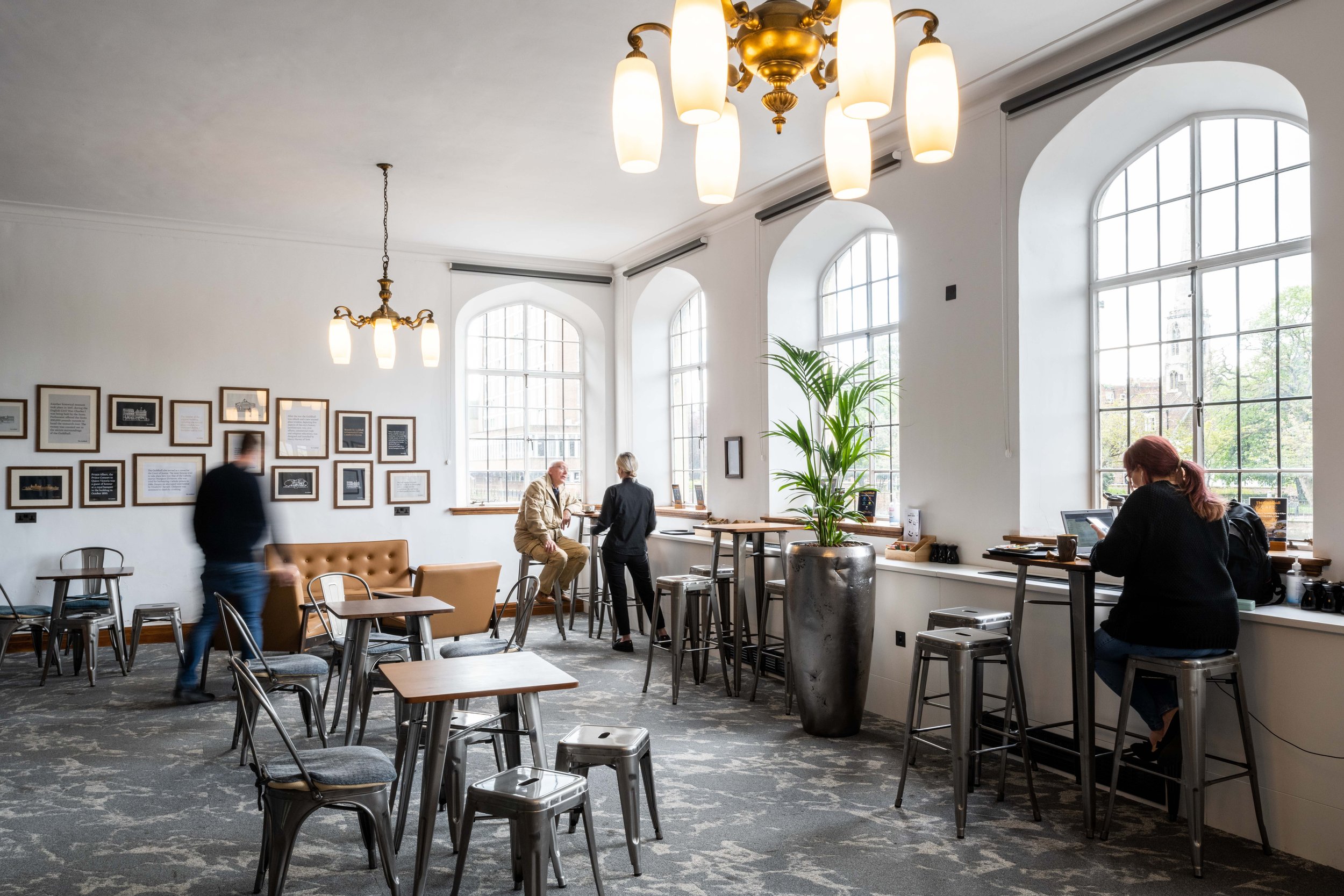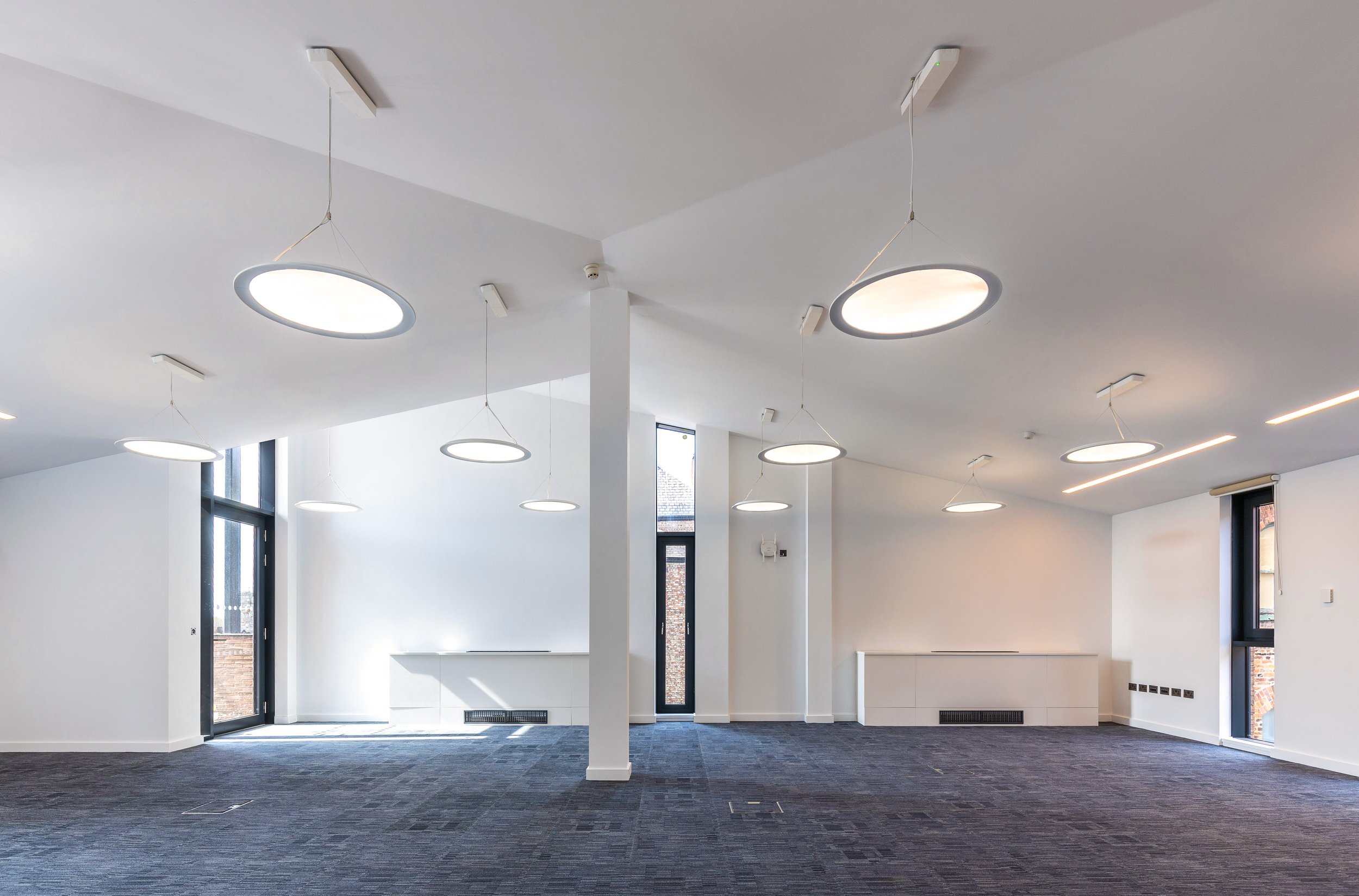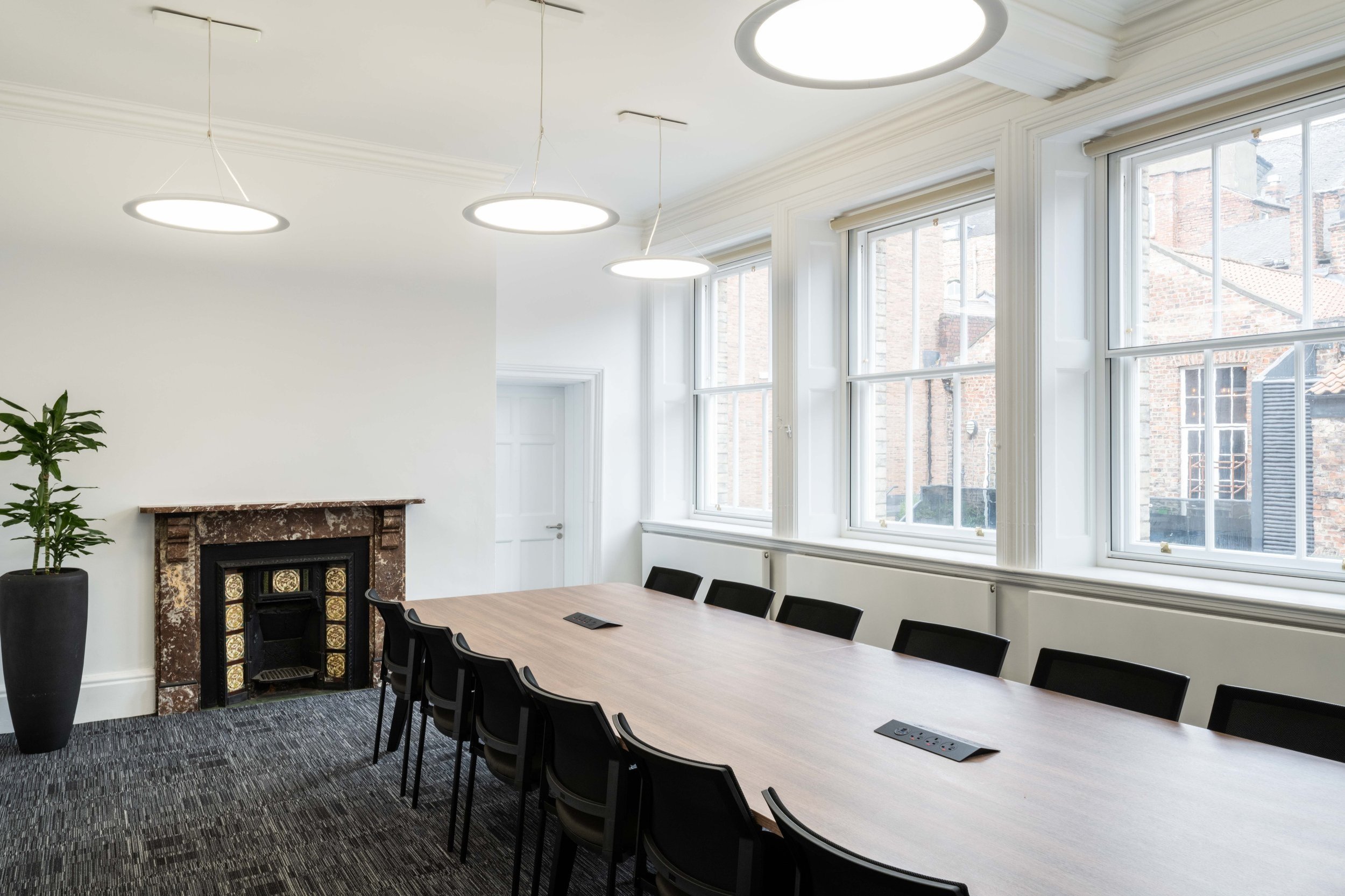URBAN DESIGN AND MASTERPLANNING
YORK GUILDHALL
CLIENT: CITY OF YORK COUNCIL
LISTED GRADE I, II* AND II
The Guildhall complex is owned by City of York Council and is made up of Grade I, II* and II listed buildings built around a large 15th-century Guild Hall. The refurbishment and remodelling has provided a world class venue, supporting and nurturing the expansion of York’s vibrant creative businesses; combining events and exhibition space with state-of-the-art collaboration and co-working facilities in the heart of a historic and creative city, securing a sustainable future for one of its most iconic buildings.
To deliver this vision, the significance of the Guildhall complex has been enhanced and better revealed to users and the general public, adopting innovative approaches to establish the Guildhall itself as the home base for a C21st Guild of digital innovators collaborating across the spectrum of creative, digital and arts sectors.
The core requirement for modern flexible offices and the associated provision of multipurpose space to suit a variety of potential uses as co-working/ conferencing/meeting and events/exhibition space has been achieved through sensitive planning and an understanding of the balance between new and existing, volume and space.
By retaining the historic use of the council’s chamber and enhancing public access, the importance of the 600-year-old, direct relationship between the city’s governance, commerce, and culture are not just acknowledged, but remain intrinsically bound together in the future.
“The investment in the Guildhall manifests our city’s ambitions and aspirations in preserving history whilst at the same time embracing the future. This project has taken one of the most important heritage buildings in the UK, one of York’s best-loved historic sites, and has – through excellent design, thoughtful investment and very high quality construction – built a new chapter in York’s future; innovative, environmentally progressive and accessible to all. It’s a building and a legacy that York can be proud of for many years to come.”
The works were completed successfully despite the challenges of the covid-19 pandemic and significant engineering challenges given the buildings unique location and heritage. The River Ouse was used to transport equipment and materials to site to avoid construction traffic in York’s narrow historic city centre streets.
The University of York, through York Science Park Ltd, a partnership between the University and City of York Council, is taking a long-term lease on the historic buildings, to create a hub for business, enterprise and events. The new space will enable the University to bring the innovation and support it offers to local business and enterprise into the heart of York, driving inclusive and sustainable growth in the City as it recovers from the pandemic.
The main hall suffered significant bomb damage during the second world war and since its reopening in 1960 had received only reactive repairs, putting the building at risk. The project has secured the future of the Guildhall complex, through the delivery of an economically viable and sustainable scheme. It has delivered a comprehensive (once in 100 years) refurbishment of the complex, together with new build interventions as necessary to re-purpose the complex for its new use.
Best practice conservation principles have been adopted, in terms of the approach to enhancing and better revealing the significance of the heritage assets, whilst incorporating modern servicing and amenity requirements. A Water Source Heat Pump provides sustainable green energy from the adjacent River Ouse, lowering running costs and reducing carbon emissions.
“The judges were impressed by the range of contemporary uses the Guildhall complex now supports, and how the buildings have been sympathetically restored to create community provision whilst still allowing for its original medieval purpose as a location for Council and Civic Events. This project demonstrates that even on constrained sites buildings can be refurbished and remodelled to meet contemporary standards and sets an example to the rest to consider retrofit instead of demolition.”
Within the Guildhall, the University will provide flexible workspace and business support for entrepreneurs and start-ups looking to co-locate, invest and grow. By working in close collaboration with partners they will offer opportunities for businesses to start, innovate and develop through incubator, accelerator and scale-up facilities
The 1460 Guildhall will continue to remain open to the public for tours and will continue to be used for Council and other Civic events, also providing meeting space for community groups and social enterprise as well as a venue for University events such as York Festival of Ideas and York Talks.
A café and a separate restaurant unit benefit from a new south facing riverside courtyard and garden space with an exemplary landscape treatment, creating more attractive circulation routes and linking to the adjacent retail centre and independent cinema development.
The refurbishment of Common Hall Yard into a flexible external space builds on its ceremonial traditions with the new riverside courtyard created as a destination to view the River Ouse and improve public access throughout the complex.












